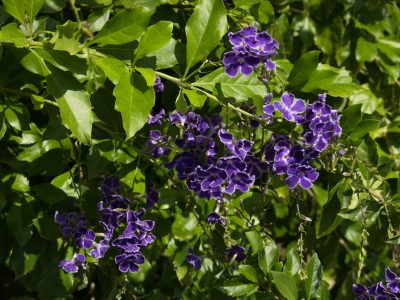Why do cucumber and squash flowers and fruit fall off the plant?
This question comes from Central Texas Gardener’s Facebook page but lots of gardeners are asking about this.
I love this question, since it involves so much of the easy science behind the life cycles of flowering plants. Some plants have very little trouble with pollination, while others struggle. Plants in the Cucurbitacea, the squash family, can have a challenging time with pollination, especially with our native bee population in decline.
Squash, cucumbers, and others in this family (sometimes called pepos by gardeners) have a long, full fruit with lots of seeds. Well, in order for that fruit to develop at all, and then to expand and elongate, pollination must occur.
If there’s no pollination, the plant has no reason to make a fruit. A fruit without offspring would be a serious waste of resources, and Cucurbits simply don’t waste their time.
If a little bit of pollination occurs, then a few seeds will develop and the fruit will expand, but will be very small. It’s all part of nature and the conservation of precious resources for survival.
Unfortunately, lack of pollination in squash and cucumbers is very common, but the good news is, the problem is easily solved: you can pollinate the flowers yourself. Many gardeners tell me that they simply use their forefinger to grab a little pollen from the male flower to pollinate the female.
Fancier folks might use a paint brush to do the same job, especially if they’re doing controlled cross-hybridization between species and want to ensure against contamination. You can also simply remove one flower and use it to pollinate the others.
Plants in the squash family have two types of flowers: male and female. The male will have an elongated stamen which contains the pollen. The female flowers produce the fruit, which you can see as a tiny swollen area behind the tubular flower. Dab pollen from the male stamen into the center of the female flower—onto the stigma—which is the elongated part in the center of the flower. All of the seeds in the flower need to be pollinated, or the fruit will be small and underdeveloped.
Bees can do the job for you, but if you don’t have a good bee population, you’ll have to assist. Many gardeners like to keep row cover over their young plants to fend off the dreaded squash vine borer moth. But once the flowers bloom, you’ll need to remove the cover for bee pollination or do it yourself.
Encourage bees with flowering plants in the vegetable garden or nearby.
Watch Trisha’s video on tackling squash vine borers.

 Rob Nash
Rob Nash Adams Kirkpatrick
Adams Kirkpatrick Daphne Richards
Daphne Richards
 Trisha Shirey
Trisha Shirey Root Knot Nematodes
Root Knot Nematodes